Belfast: What does the seahorse have to do with the city?
- Published
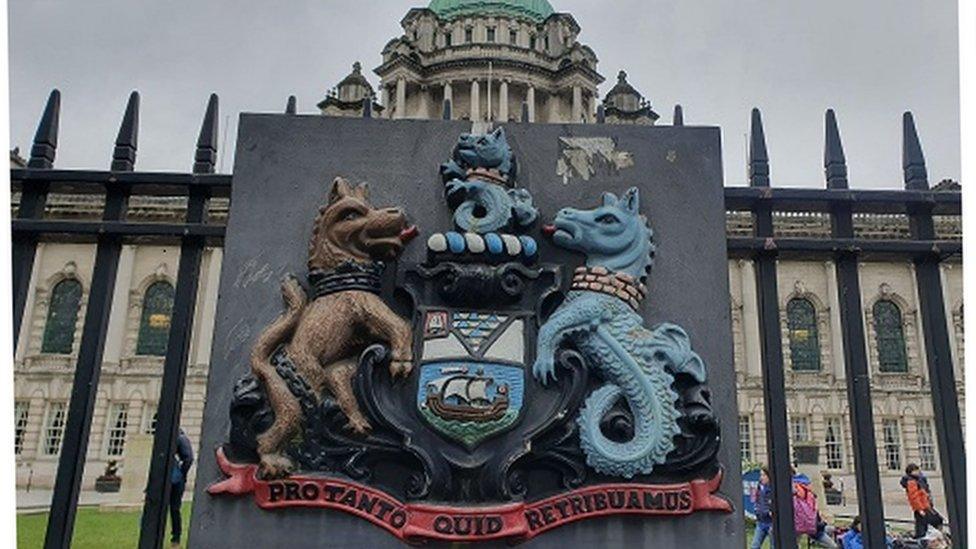
Belfast Coat of Arms depicts two seahorses, a ship and a ship's bell
Belfast is perhaps best known for the Troubles, the Titanic and a strong accent, but much less so for the city's symbol, the seahorse.
In the 19th century Belfast was a major port and played an important role in Ireland's industrial revolution.
With a strong connection to the harbour and maritime life it makes sense that a sea creature became the city's symbol.
But what does a seahorse have to do to with the city of Belfast?
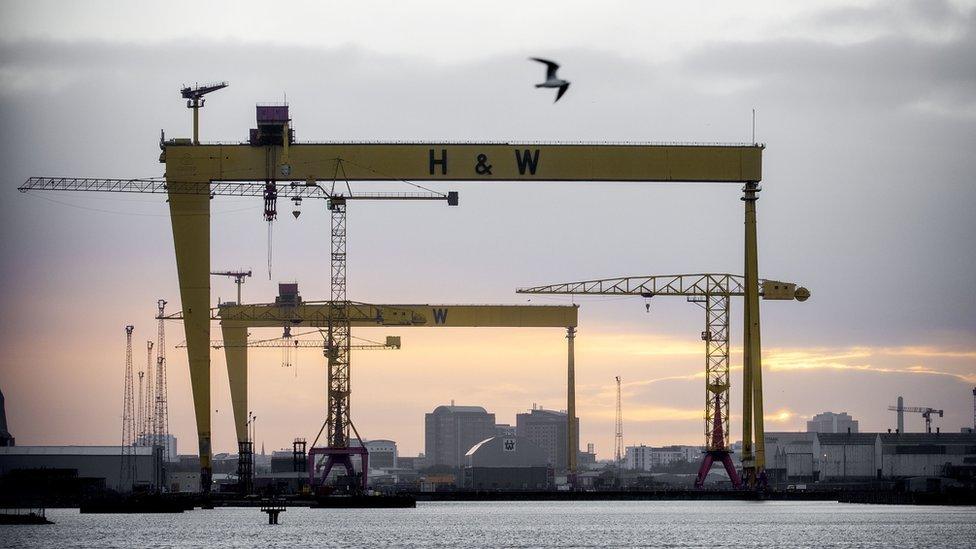
Merchants in Belfast had seahorses engraved into their coins
Coins in history
The earliest known use of a seahorse in Belfast was not in the water but on coins.
In the 17th century the city's first merchants had a seahorse on signs and printed on their coins.
Kirsty Mairs, a tour guide and collections assistant at Belfast City Hall, said the tokens are the earliest example of the symbol.
"From the history books, merchants in Belfast had the seahorse engraved into the tokens they would have used on their travels," she said.
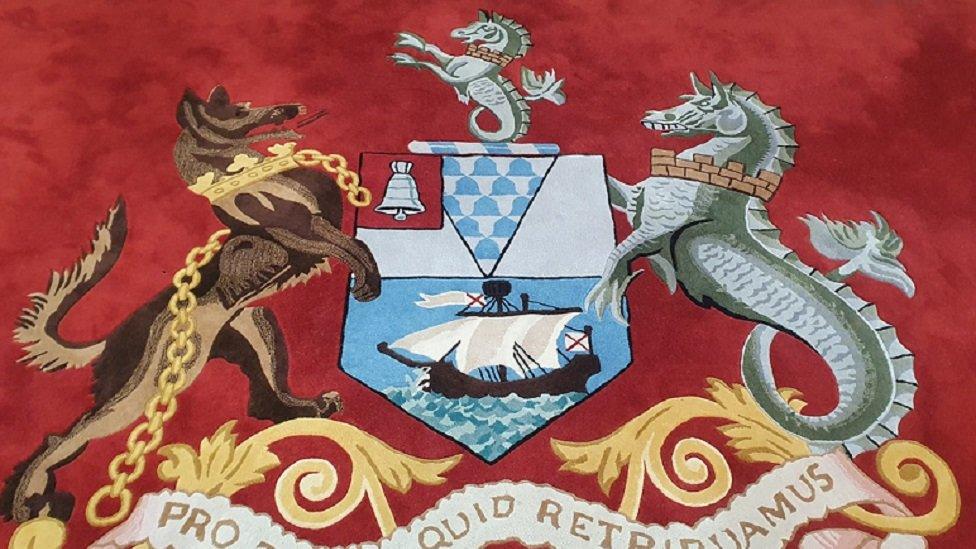
Belfast City Hall has the city's coat of arms woven into the carpets
Belfast's coat of arms depicts two seahorses, a ship and a ship's bell. The sea, ships and seahorses centre around all aspects of the city's history.
"The seahorse is originally a symbol of good fortune and protection, which is important for those travelling by boat or ship," Ms Mairs said.
"You see that symbol used in maritime cities across the world - the Isle of Wight also has a seahorse in its coat of arms."
Seahorses in the city
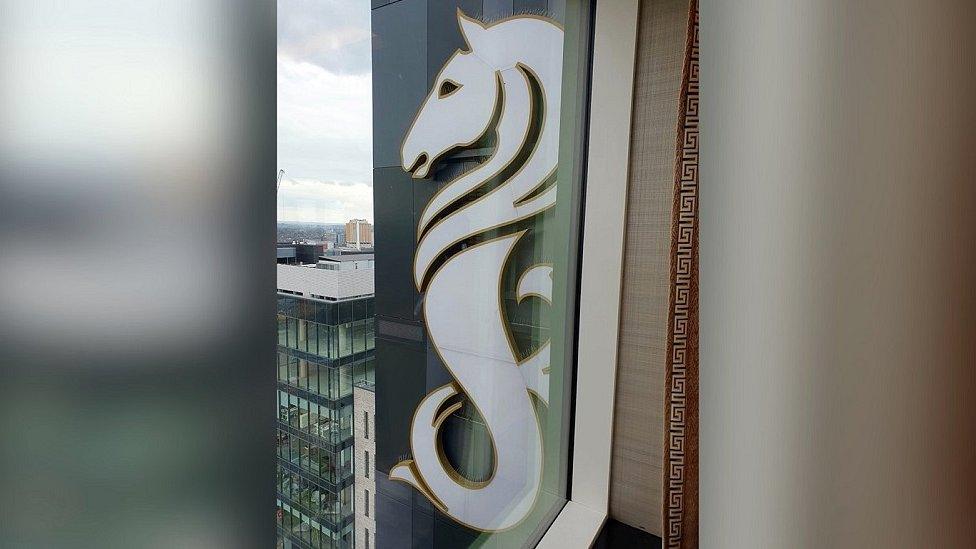
The seahorse features on the side of one of the tallest buildings in Belfast city centre, the Grand Central Hotel
One of the more prominent seahorses visible in Belfast hangs high on one of its tallest buildings, the Grand Central Hotel.
The hotel is run by Hastings Hotels and its managing director, Howard Hastings, explained why they chose the seahorse for the hotel.
"We wanted to bring the history of the city into the hotel and remind tourists and visitors about the maritime history of this place, and the seahorse is a big part of that," he said.
"I think the history of Belfast can be forgotten by people and we don't want to forget the achievements of this city."

The seahorse features in artwork on urban streets in Belfast
Belfast City Hall is covered in seahorses, from the lampposts and bins around the hall, to the carpets and stained glass windows within the building.
It is the main symbol for Royal Belfast Academical Institution, an independent grammar school in the city.
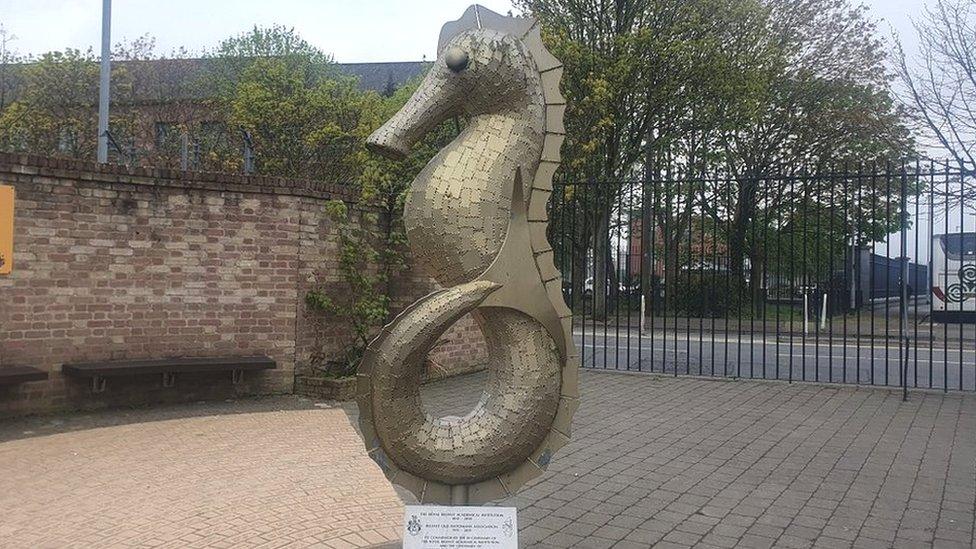
A seahorse sculpture stands outside Royal Belfast Academical Institution's library
The school was founded by by Belfast merchants and retains numerous references to the seahorse in its sports teams, a sculpture by the school library and in the school's crest.
Queen's University Belfast has a seahorse on the right side of its coat of arms.
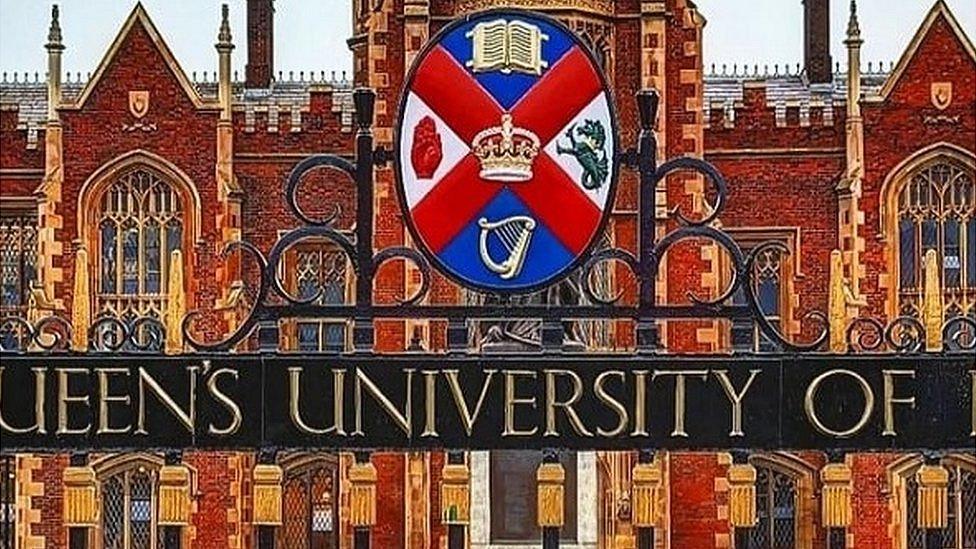
Queen's University Belfast crest includes a seahorse
Another is the stainless steel seahorse sculpture found on Dargan Road.
It was unveiled in 2013 to mark 400 years of Belfast Harbour.
A spokesperson for the Belfast Harbour said: "The 8m high seahorse sculpture welcomes thousands of daily visitors to the harbour on what is the port's busiest entrance."
Sculptor Ralf Sander said in 2013 that given the myths and legends surrounding the seahorse, he believed the sculpture had the potential to become a unifying mascot for the city's people.
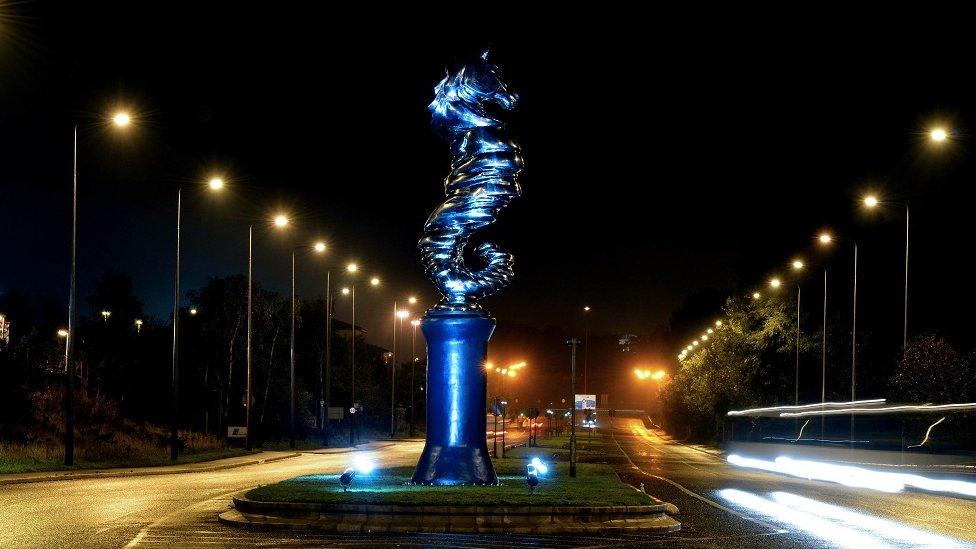
In 2013 a seahorse sculpture was unveiled to mark 400 years of Belfast Harbour
Is it really a seahorse?
Kirsty Mairs explained that the seahorse in Belfast was in fact based on "the hippocampus or hippocamp from Greek mythology".
"The creature is not like a real seahorse but half horse, half fish," she said.
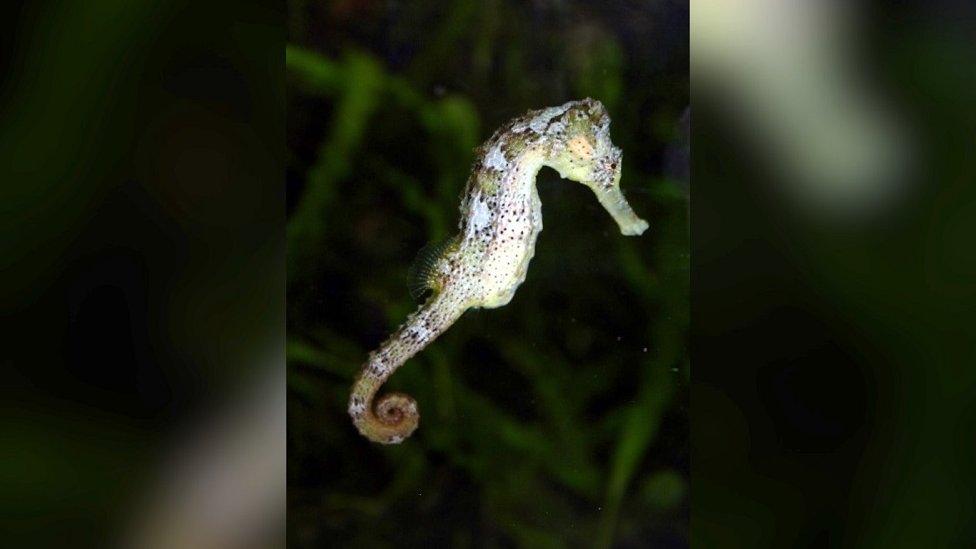
Real seahorses can be found along the north coast of Northern Ireland but not near Belfast
"The mythical sea creature goes back to the Etruscan, Phoenician and Roman mythology. You might have noticed many fountains in Italy and in Spain also have the seahorse as a connection to the sea."
In terms of real seahorses, the long-snouted and spiny creatures can be found along the north coast of Northern Ireland but not close to Belfast.
The history of Belfast
Belfast developed around the rivers Lagan, Farset and Blackstaff, running from culverts, docks, quays and slipways, before entering the harbour, Belfast Lough and then the sea.
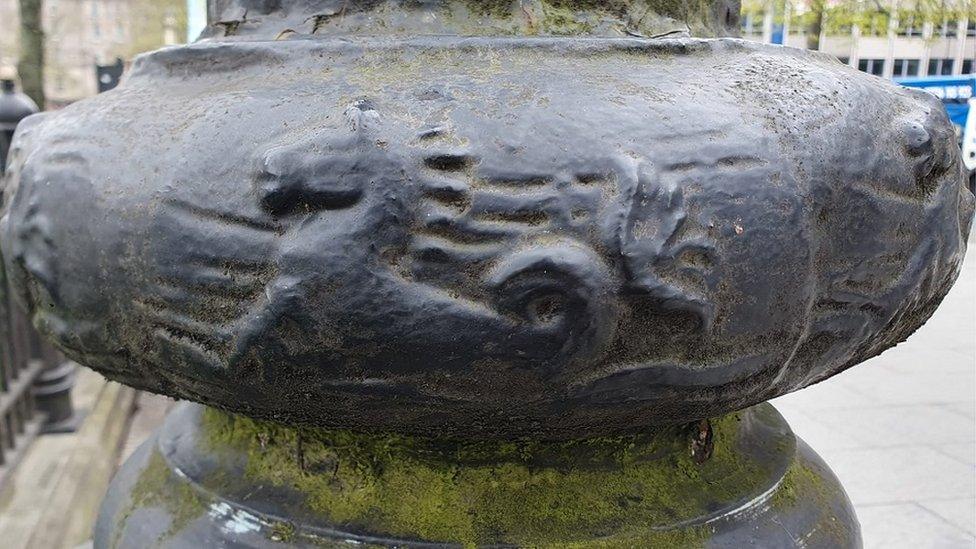
The mythical seahorse is a constant figure around Belfast City Hall, even on its lampposts
In Irish, Belfast is Béal Feirste and it means "mouth of the sandbank ford".
In the 19th century, it was Ireland's largest city and the third most important port (behind London and Liverpool) in the United Kingdom.
"The connection to the sea meant the seahorse was a good-luck charm; it meant more to those in the 16th century than people now," Ms Mairs said.
"Unfortunately, there is no definitive answer to why the seahorse is the city's symbol but it's all around this beautiful city."
Related topics
- Published23 October 2013